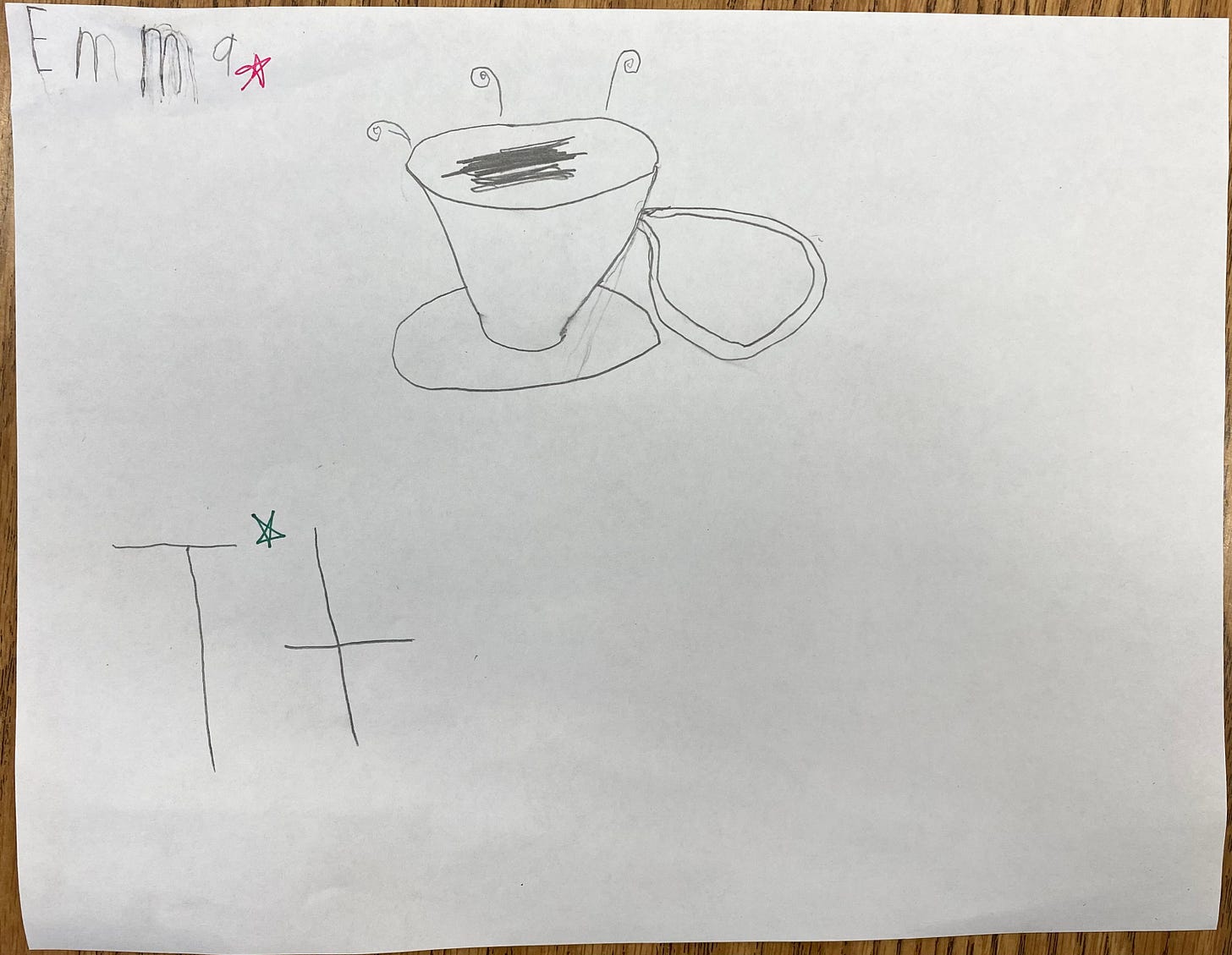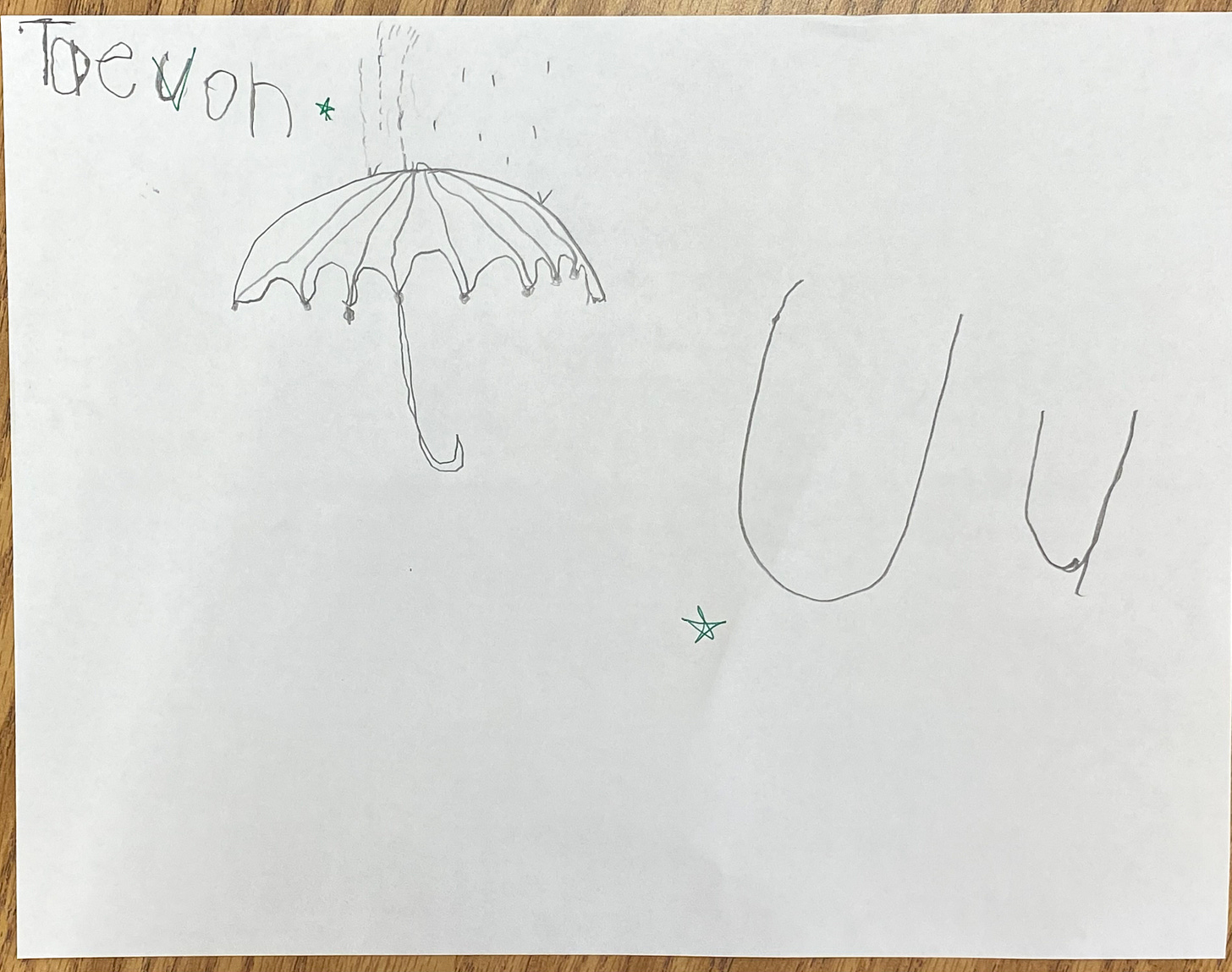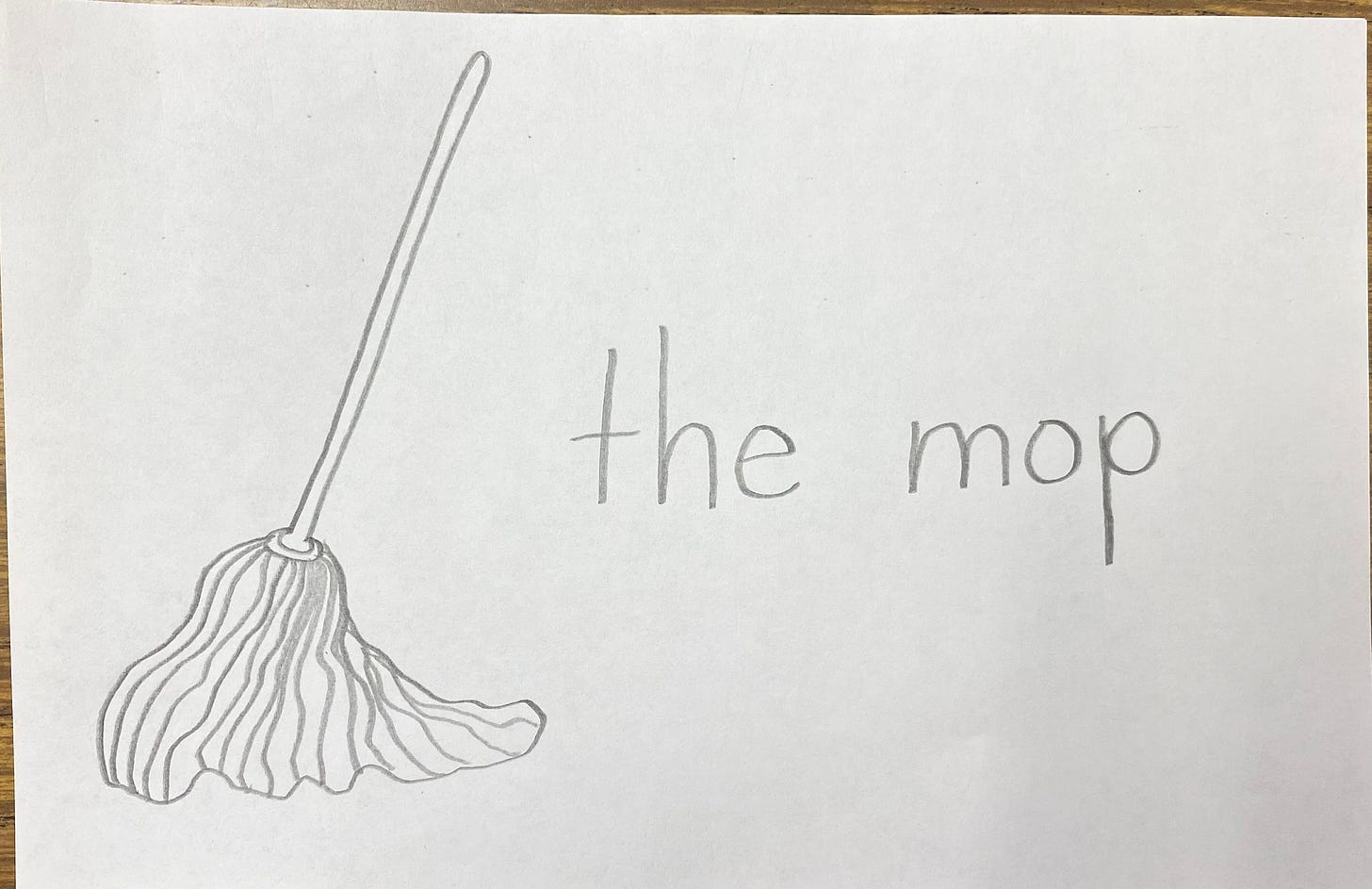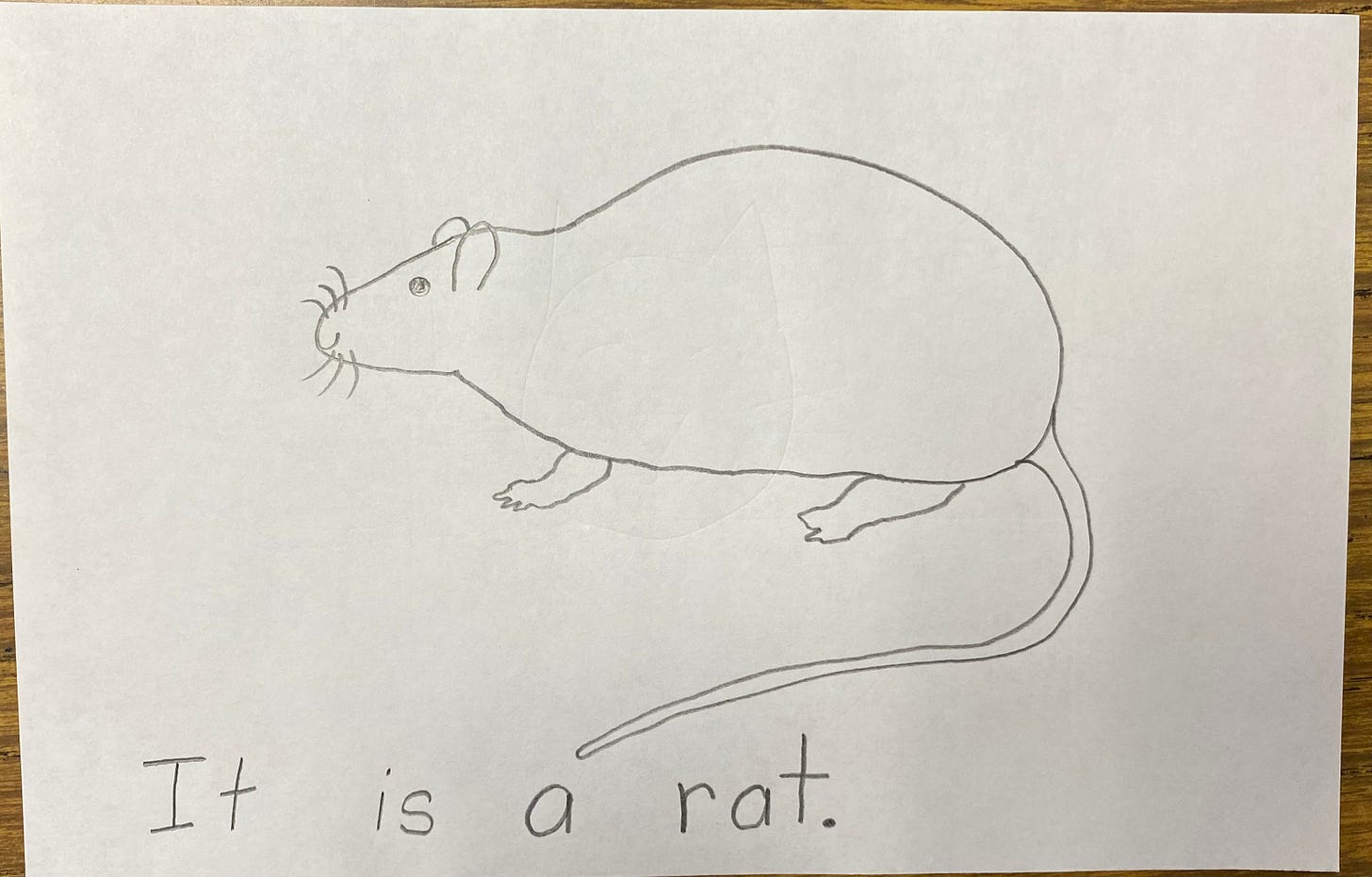As most of you know, my whole group writing time begins with 8 weeks of drawing—step-by-step, with the students copying me—and then labeling the pictures with a sound or two that we can hear. (Click here to see what a typical lesson looks like during the first few weeks of school).
Soon, however, I will give the students journals and expect them to write —WRITE write, as in sentences—on their own. How do we go from them copying a couple of letters to them thinking of an idea to write and listening to the sounds and writing words?
There are a few major steps to follow and to make sure you’re including in your drawing/writing lessons. Think of them as a scope and sequence for the first two months of whole group writing.
Draw Pictures Step-by-Step
Train your students to watch your every move as you model each step of a simple drawing. Students will want their drawings to turn out and will figure out soon enough that the way to make that happen is to watch you. Use this time to indirectly (and explicitly, as well) teach them that it pays to watch you and listen to you.
Begin Listening to Sounds and Choosing Letters to Label Pictures
From the very first drawing you do together, help your students to hear a sound (usually the first sound) and choose the letter to spell that sound. Get your students’ attention, model the correct letter formation, and then tell them to “say the words” to make their pencil make the letter. You can write one or two sounds. Try to practice segmenting during your phonemic awareness time for several days before expecting students to segment a three- or four-phoneme word to write.
Write CVC Words or Words with Four Sounds
It is good for the students to see how you segment sounds, count the sounds, and then choose letters to match the sounds to write an entire word. You can also combine this step with the next step. All of this is shown in the video.
Write Two-Word Phrases and Teach How to Make a Finger Space
Teach students that there are two types of words: words they know and words they don’t know. Words they know are high frequency words that you have previously taught (at a different time of day). All students may not “know” them—as in they might not be able to spell them or always recognize and read them correctly—but the class knows them; that is, they’ve been explicitly introduced and they’re posted somewhere in the room. These are words that students will copy or write without really thinking much about the sounds. The other category of words includes all the other words they might want to write. For these, they’ll need to listen to the sounds. They’ll get better and better at segmenting and isolating sounds and choosing the letter(s) to write for each sound, but of course you’ll need to model this, during whole group writing time and on some days during small group instruction. I have only introduced the and is and next week I’ll teach you and a. The and a are the most important because you need them to write two-word phrases that go with the drawings, such as the mop or a dog.
Before writing the second word, you’ll have to model how to make a space. I call them finger spaces and teach my students how to lay the pointer finger of their non-pencil hand on the paper to make a space between words. (This is tricky but doable for lefties.) All of these skills take several weeks and sometimes even months to acquire; at this point we are just introducing and modeling them so students can practice using them and be comfortable with trying them on their own in a few weeks when “independent” writing commences.
Write Short Sentences
Do a few drawing and writing lessons that include a complete sentence. He is a man. The hen is red. Notice that these sentences are made up of “words we know” and “words we don’t know.” You can start saying now that the first letter we write is always a capital letter and the rest have to be lowercase. Starting with a capital isn’t that crucial this time of year, but using all lowercase definitely is. Don’t let students use capital letters; it’ll be tough breaking that habit if you let it develop. And please don’t think that the first grade teacher can fix it. They won’t appreciate it. Mention periods—perhaps you’ve already talked about them during read aloud or some other time of day—and tell students they can always put a period at the end of their writing.
That’s about it. I’m planning on starting journal writing (independent writing) the second week of October. I don’t recommend the journals until students have a lot of skills in place, including decent letter formation, so don’t feel the need to start the same week I do. Treasure these weeks of whole group drawing and writing because it’s your opportunity to teach a lot of necessary foundational skills to all the students at once.









Share this post